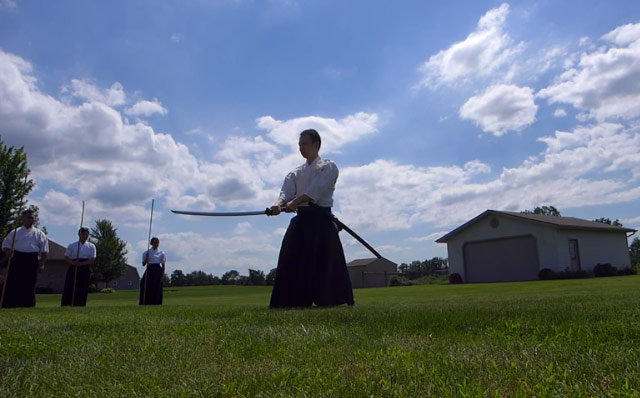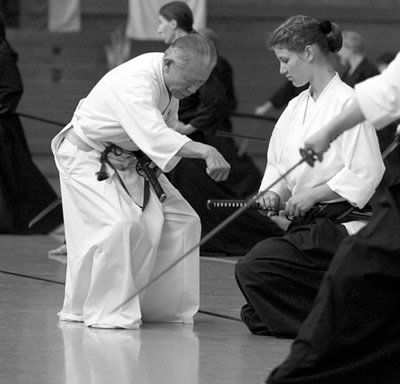

You have to take responsibility as a martial artist to not do that to people.” O-Sensei’s way of viewing this situation gave Nishio Sensei a great insight into the real nature of aikido. O-Sensei says, “Well, when you have nice things and you show them off and flaunt them to other people, you’re tempting people and you’re making that person into a criminal. Nishio Sensei said he followed O-Sensei afterward to ask him what he meant.

O-Sensei came into the dojo a little while later and said, “What’s wrong with Tohei?” Somebody said, “Somebody stole his jacket.” O-Sensei said to Tohei, “Well, it’s your fault that somebody stole your jacket.” What did that mean? Now, you’re not going to be open to their attack or their strike, but you have to acknowledge the other person right from the beginning.” “Right from the very beginning when you face a person, you have to face them in a way that shows you’re open to what it is that they have to say. It was a very, very tough time economically. This was a time when you couldn’t even get things like leather shoes in Japan. Tohei came into the dojo one night complaining that somebody stole this beautiful leather jacket that he’d bought while he was in Hawaii. Do you remember the story about Nishio Sensei and Tohei Koichi Sensei’s jacket? If your goal is to prevent conflict, you need to be aware of yourself and the messages you’re sending in any given situation. Now when you’re dealing with asocial/predatory violence, or violence exploiting large differences in power, that’s a different situation. If you’re a decent human being, you can avoid a lot of that. In many cases when people get attacked in social violence situations, you get attacked because you’re being a jerk. When you face off with another person, you’re creating part of that interaction. He came home one day and his mom said, “Why are you getting into these fights?” He’d say, “Ah, the other guy was looking at me.” His mom said, “Well, you must have been looking too.” I was talking to a guy a while back who was a karate instructor from a rough part of England, and he would always get in a lot of fights as a young guy. Sometimes I think about it from a perspective of why people get in fights. Now, you’re not going to be open to their attack or their strike, but you have to acknowledge the other person right from the beginning. Right from the very beginning when you face a person, you have to face them in a way that shows you’re open to what it is that they have to say. You’ve already defined a situation as being based upon conflict and you’re already expressing that you’re not willing to accept the other person. If you take a stance against a person or you put your hands up, you’ve already become part of the fight. The idea of kamae or taking a stance, right on the face of it, is sort of an oppositional position. The original transcript of this interview has been edited for clarity and brevity.Īikido Journal (Josh Gold): Can we spend a few minutes exploring the technical side of Nishio aikido? One thing I found interesting is that in Nishio aikido you usually start from a natural stance, not hanmi posture, right? For more information about Nishio Sensei’s life and work, please see Part 1 of this interview series. He started his aikido training at the Pasedena Aikikai, where he then taught as a primary instructor in the 1980s.

Greenwood Sensei has practiced aikido for 40 years and holds a 6th dan rank in the art in addition to a 5th dan rank in iaido and experience in Okinawan Kempo karate, judo, and jiu-jitsu. Philip Greenwood Sensei is the chief instructor and co-founder of Greenwood Aikido in Temecula, California as well as the president of the Nishikaze Aikido Society of America, a 501(c)(3) non-profit public charity and educational organization dedicated to spreading the work of notable aikido and iaido innovator and O-Sensei student Nishio Shoji (1927-2005), who was Greenwood’s instructor for many years.


 0 kommentar(er)
0 kommentar(er)
